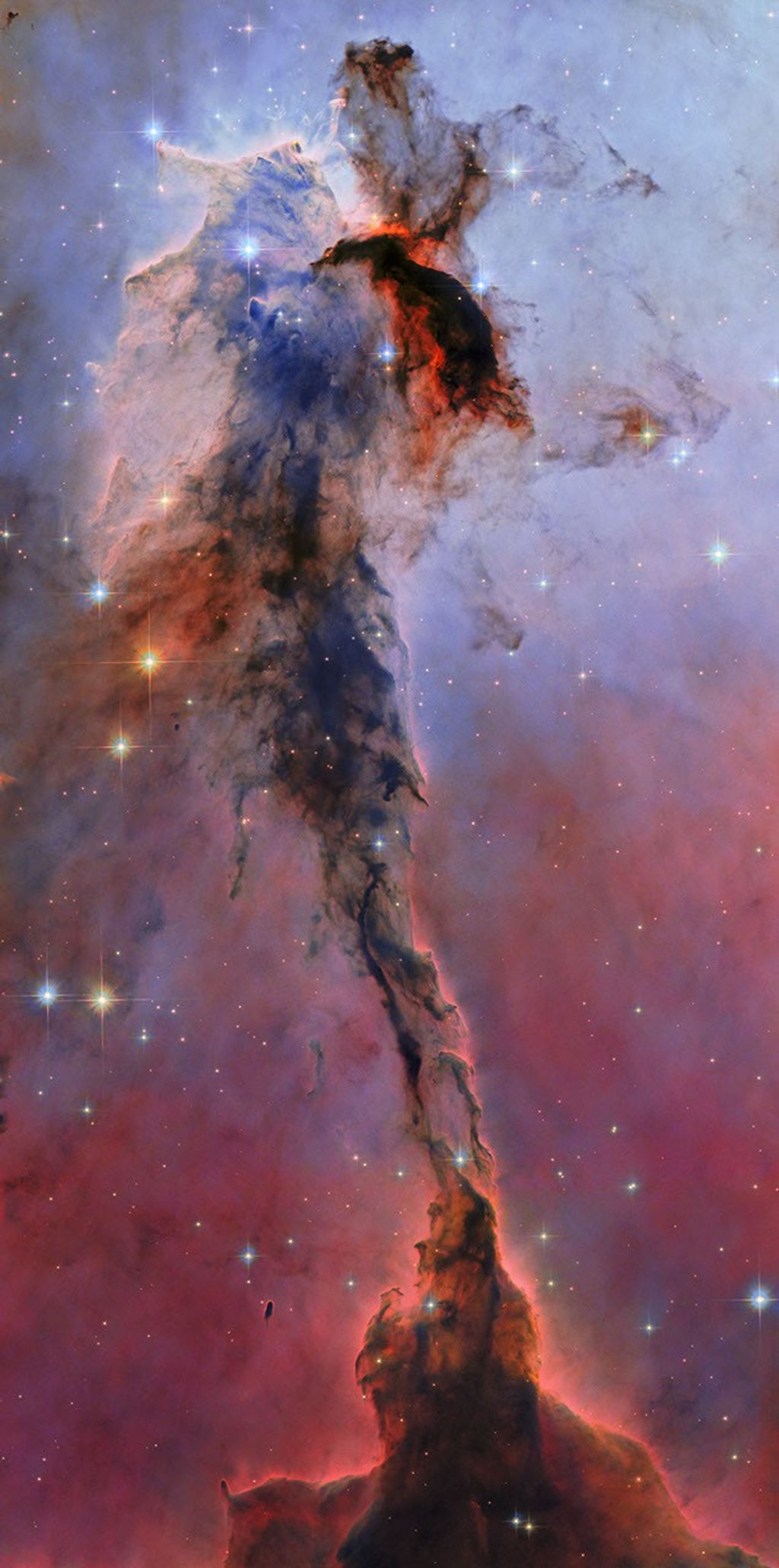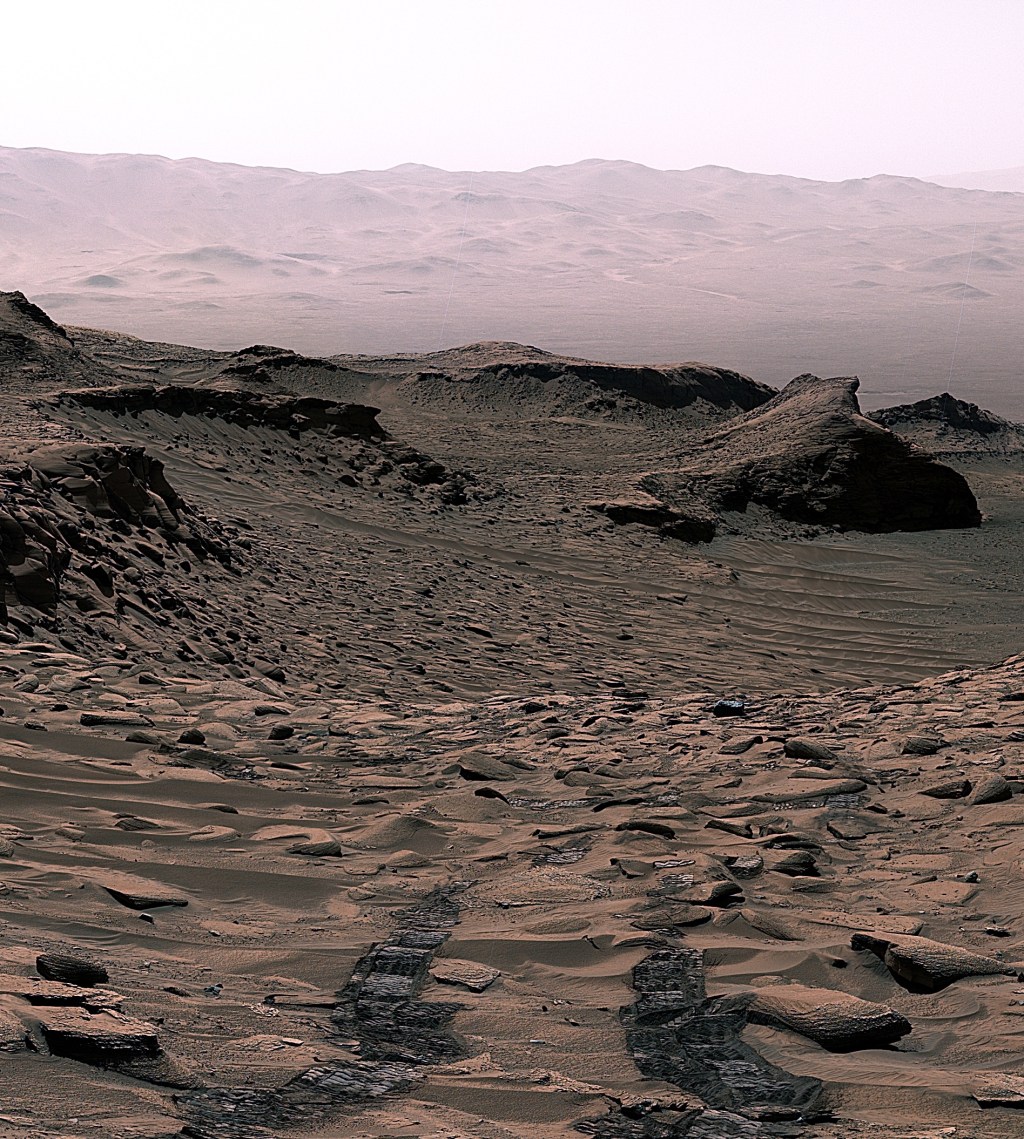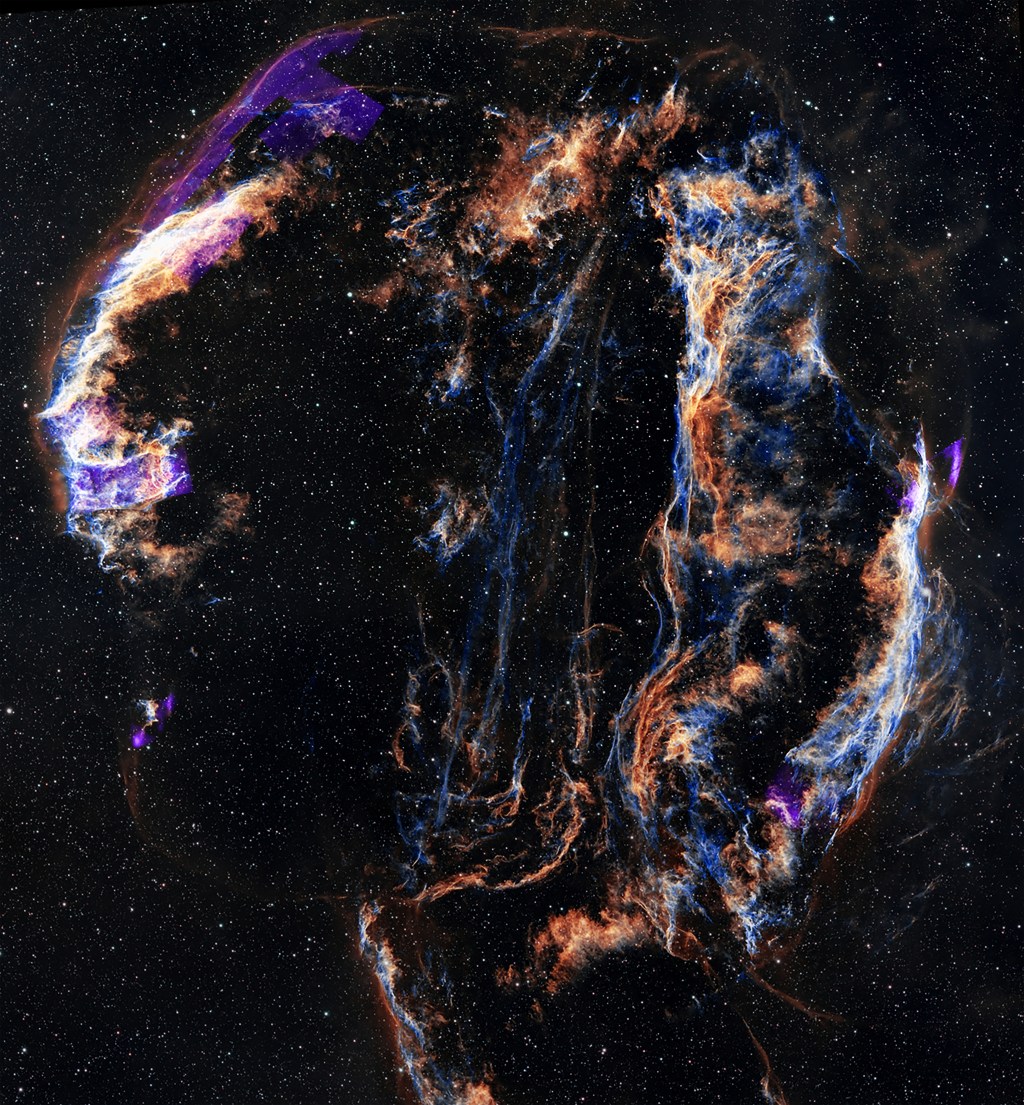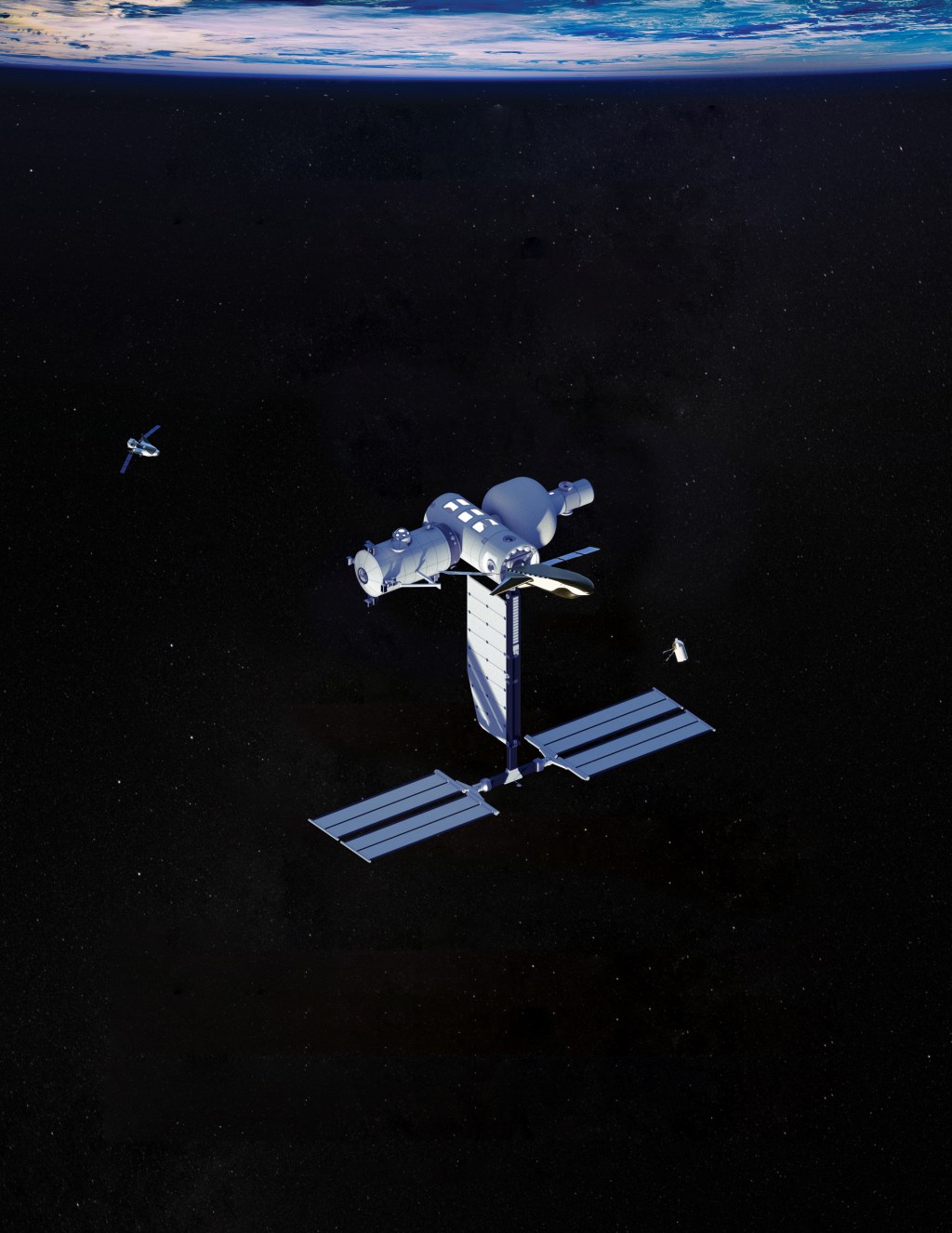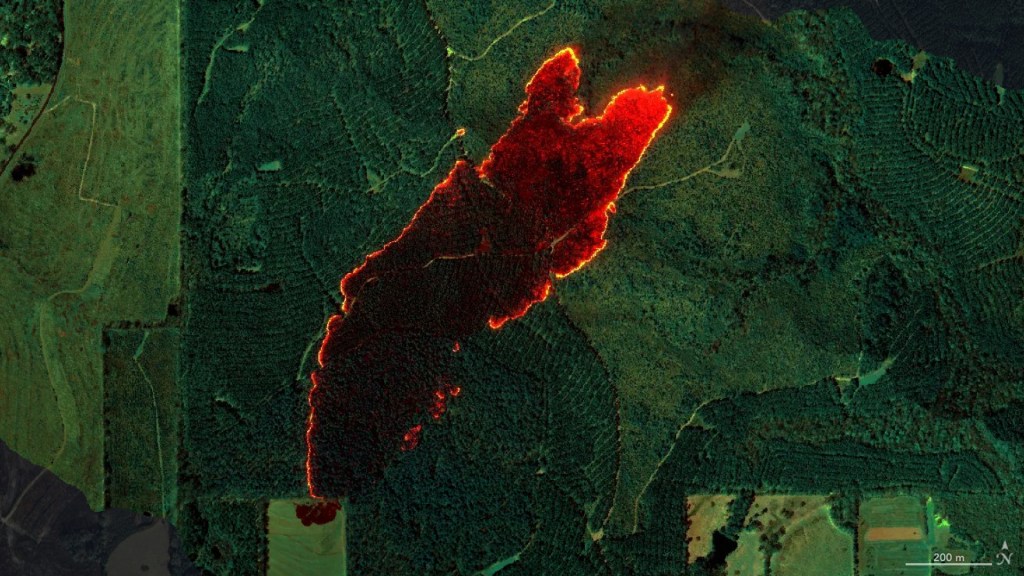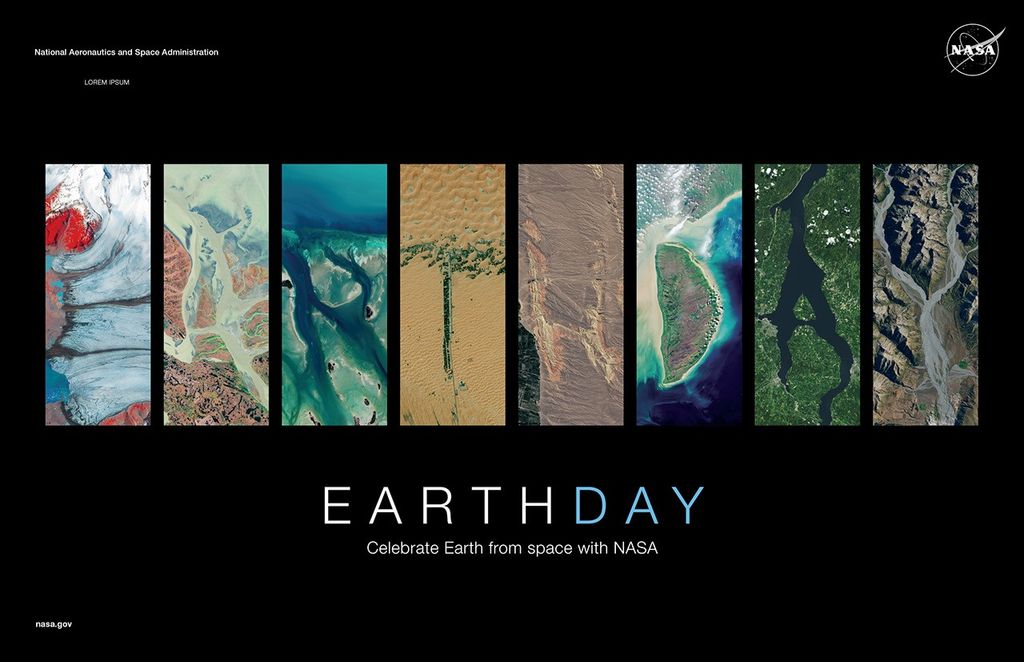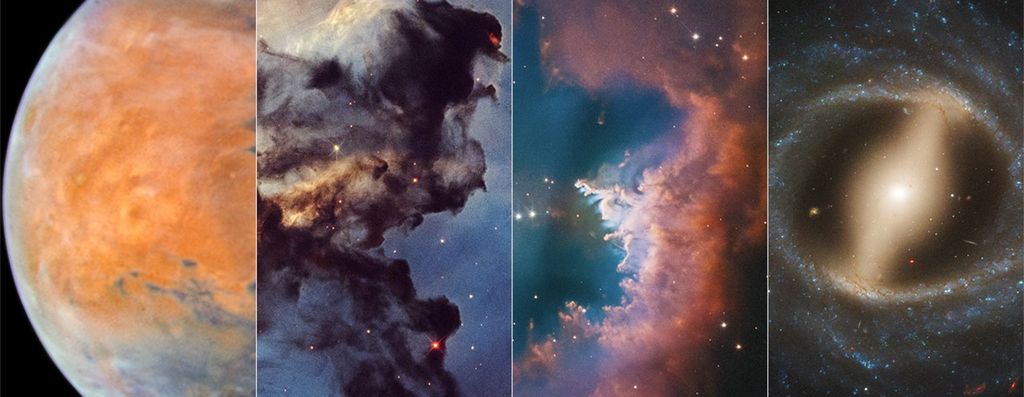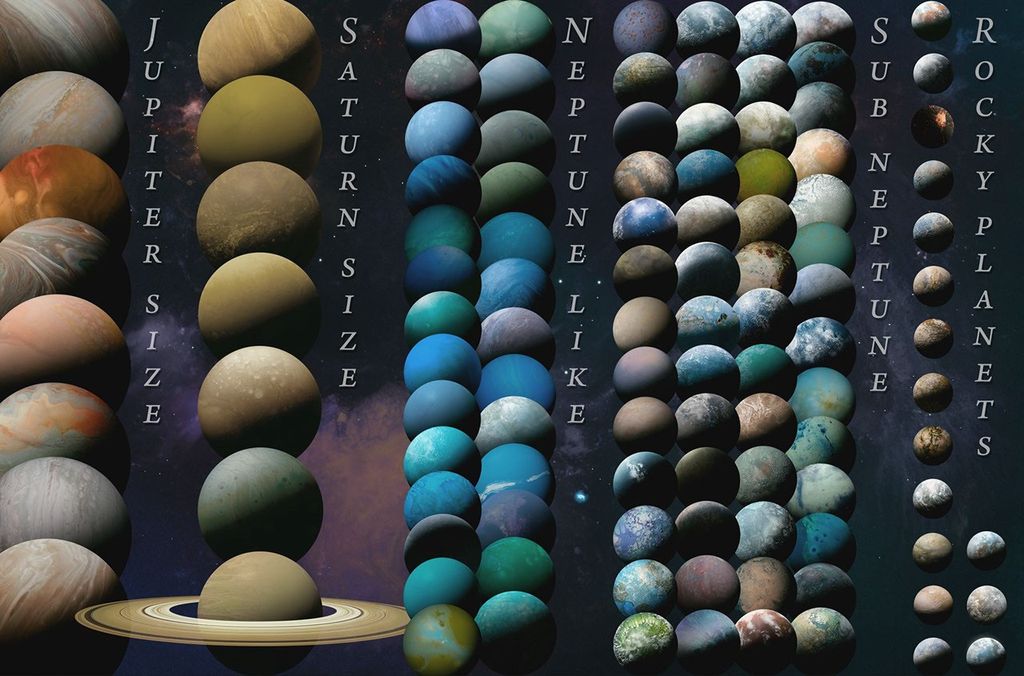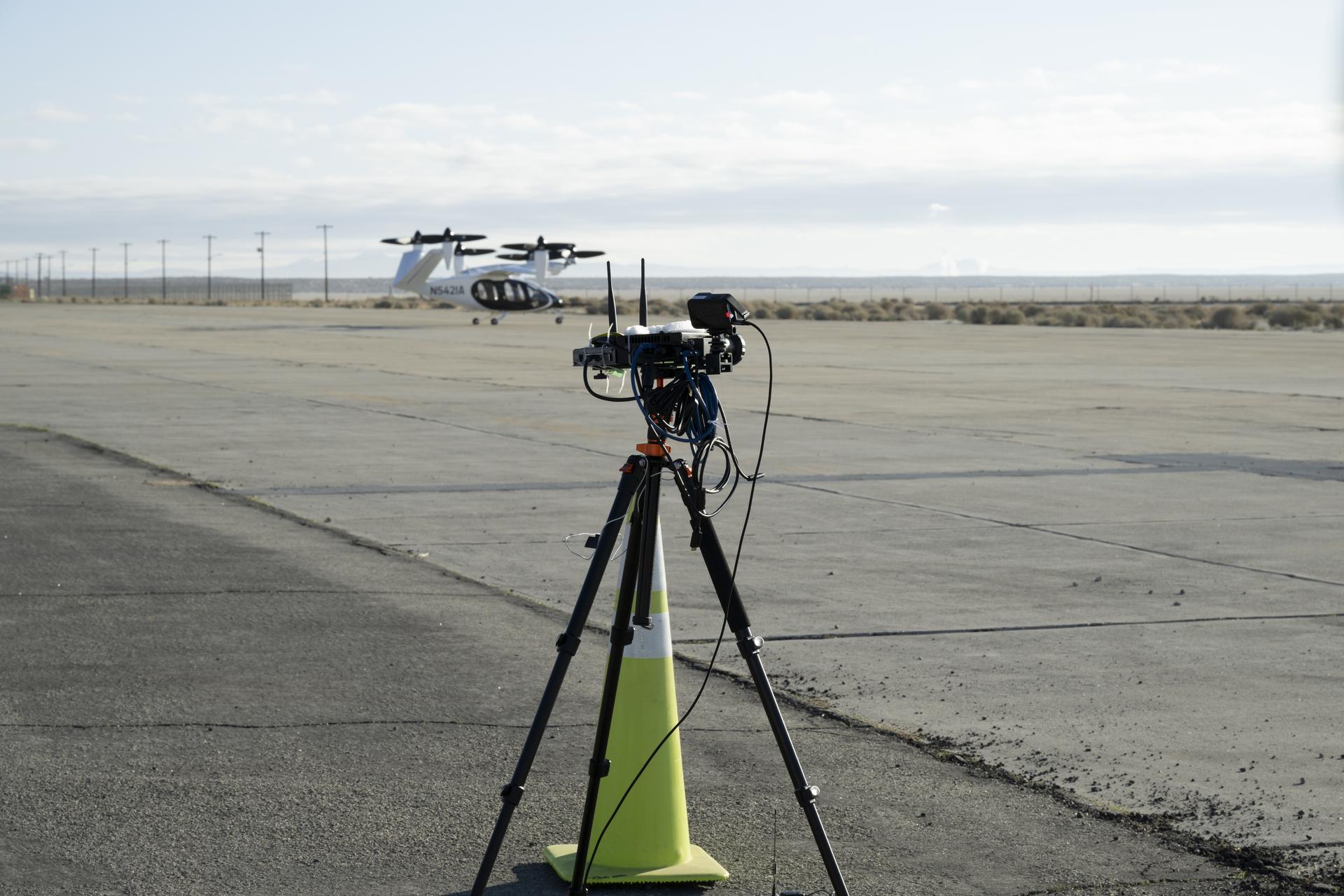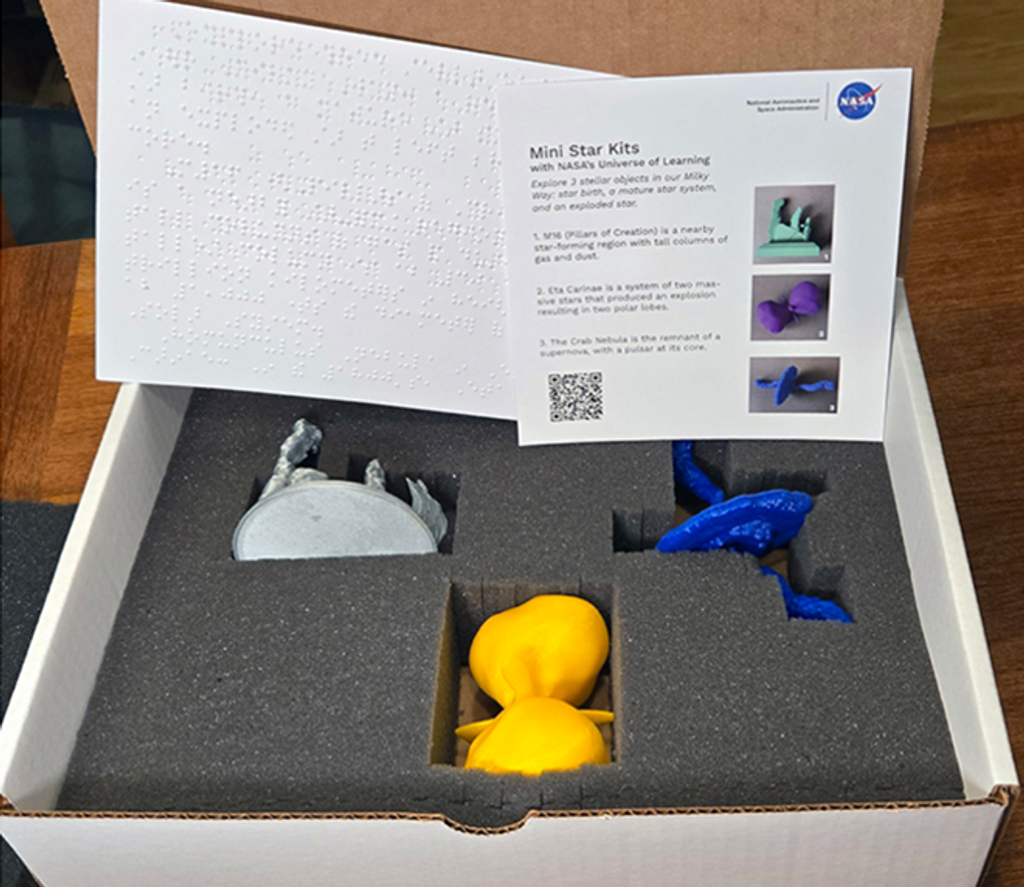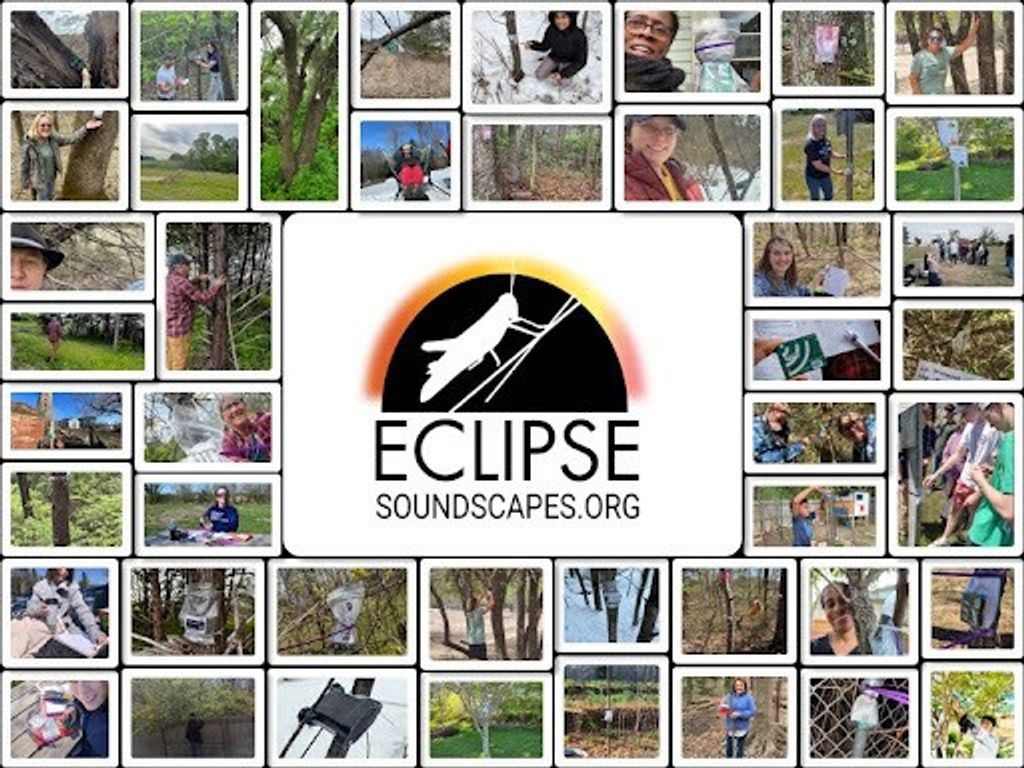1 min read
Dust Band Around the Nucleus of “Black Eye Galaxy” M64

A collision of two galaxies has left a merged star system with an unusual appearance as well as bizarre internal motions. Messier 64 (M64) has a spectacular dark band of absorbing dust in front of the galaxy's bright nucleus, giving rise to its nicknames of the "Black Eye" or "Evil Eye" galaxy.
Fine details of the dark band are revealed in this image of the central portion of M64 obtained with the Hubble Space Telescope. M64 is well known among amateur astronomers because of its appearance in small telescopes. It was first cataloged in the 18th century by the French astronomer Messier. Located in the northern constellation Coma Berenices, M64 resides roughly 17 million light-years from Earth.
At first glance, M64 appears to be a fairly normal pinwheel-shaped spiral galaxy. As in the majority of galaxies, all of the stars in M64 are rotating in the same direction, clockwise as seen in the Hubble image. However, detailed studies in the 1990's led to the remarkable discovery that the interstellar gas in the outer regions of M64 rotates in the opposite direction from the gas and stars in the inner regions.
Active formation of new stars is occurring in the shear region where the oppositely rotating gases collide, are compressed, and contract. Particularly noticeable in the image are hot, blue young stars that have just formed, along with pink clouds of glowing hydrogen gas that fluoresce when exposed to ultraviolet light from newly formed stars.
Astronomers believe that the oppositely rotating gas arose when M64 absorbed a satellite galaxy that collided with it, perhaps more than one billion years ago. This small galaxy has now been almost completely destroyed, but signs of the collision persist in the backward motion of gas at the outer edge of M64.
This image of M64 was taken with Hubble's Wide Field Planetary Camera 2 (WFPC2). The color image is a composite prepared by the Hubble Heritage Team from pictures taken through four different color filters. These filters isolate blue and near-infrared light, along with red light emitted by hydrogen atoms and green light from Strömgren y.
About the Object
- R.A. PositionR.A. PositionRight ascension – analogous to longitude – is one component of an object's position.12h 56m 43.87s
- Dec. PositionDec. PositionDeclination – analogous to latitude – is one component of an object's position.21° 41' 0.09"
- ConstellationConstellationOne of 88 recognized regions of the celestial sphere in which the object appears.Coma Berenices
- DistanceDistanceThe physical distance from Earth to the astronomical object. Distances within our solar system are usually measured in Astronomical Units (AU). Distances between stars are usually measured in light-years. Interstellar distances can also be measured in parsecs.Approximately 17 million light-years (5.2 Megaparsecs).
- DimensionsDimensionsThe physical size of the object or the apparent angle it subtends on the sky.This image is roughly 1.5 arcminutes (7,400 light-years or 2,300 parsecs) wide.
About the Data
- Data DescriptionData DescriptionProposal: A description of the observations, their scientific justification, and the links to the data available in the science archive.
Science Team: The astronomers who planned the observations and analyzed the data. "PI" refers to the Principal Investigator.This image was created from HST data from the following HST programs: 9042: S. Smartt, G. Gilmore, N. Trentham, S. Hodgekin, and C. Tout (Institute of Astronomy), and J. Danziger (U. Trieste) 8591: D. Richstone (U. Michigan), S. Faber (UCSC), J. Pinkney (U. Michigan), R. Bender (Universitats Sternwarte, Muenchen), G. Bower (NOAO), A. Dressler (Carnegie Observatories), A. Filippenko (UC Berkeley), K. Gebhardt (UCSC), R. Green (NOAO), C. Grillmair (SIRTF Science Center), L. Ho (Carnegie Observatories), J. Kormendy (U. Hawaii), T. Lauer (NOAO), J. Magorrian (Cambridge U.), S. Tremaine (Princeton). - InstrumentInstrumentThe science instrument used to produce the data.HST>WFPC2
- Exposure DatesExposure DatesThe date(s) that the telescope made its observations and the total exposure time.April 8 - July 6, 2001, Exposure Time: 1.1 hours
- FiltersFiltersThe camera filters that were used in the science observations.F450W (B), F547M (Strömgren y), F656N (H-alpha), F814W (I)
- Object NameObject NameA name or catalog number that astronomers use to identify an astronomical object.M64,NGC 4826,Black Eye Galaxy
- Object DescriptionObject DescriptionThe type of astronomical object.Spiral Galaxy
- Release DateFebruary 5, 2004
- Science ReleaseAn Abrasive Collision Gives One Galaxy a “Black Eye”
- CreditNASA and The Hubble Heritage Team (AURA/STScI); Acknowledgment: S. Smartt (Institute of Astronomy) and D. Richstone (U. Michigan)

Blue: F450W (B) Cyan: F547M (Strömgren y) Red: F656N (H-alpha) Pink: F814W (I)
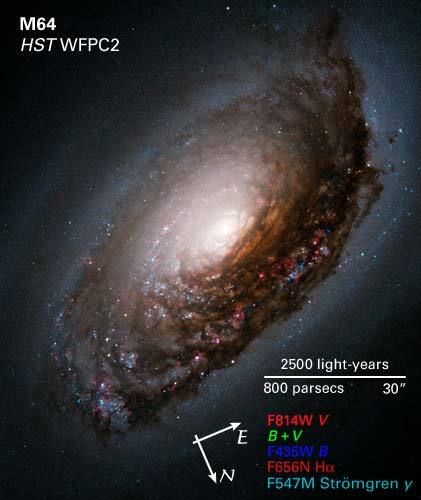
Related Images & Videos
Share
Details
Claire Andreoli
NASA’s Goddard Space Flight Center
Greenbelt, Maryland
claire.andreoli@nasa.gov


